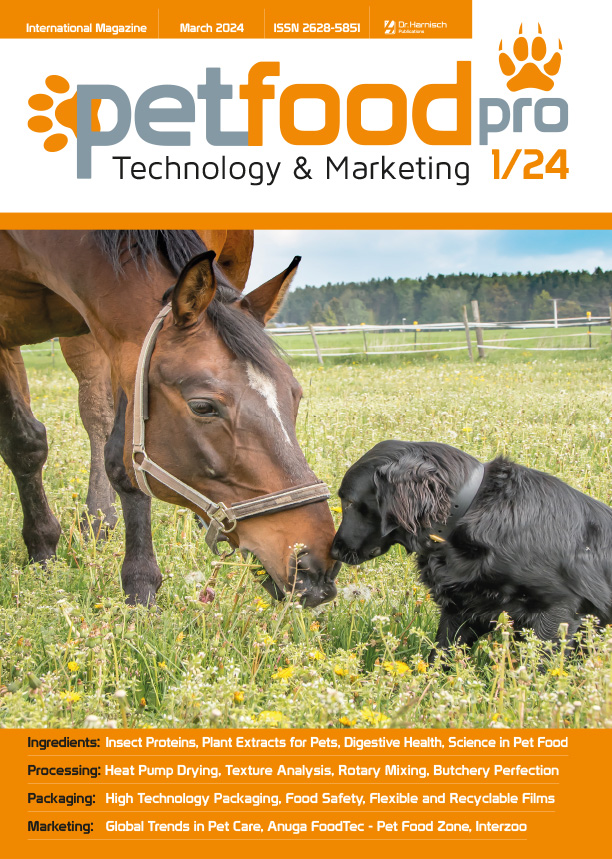Dr. Constanze Gilch runs a specialist veterinary practice in Postbauer-Heng, Germany. The range of services includes ophthalmology, dermatology, surgery, internal medicine and dentistry.
What is high-quality pet food in your opinion?
The term “high-quality” has changed considerably in recent years. Every pet owner understands it differently. In my opinion, high-quality pet food consists of good ingredients without too many additives. Because many of these additives are not really necessary and you often don’t know how much of them are actually included. What may be good for us humans is not necessarily good for an animal. High quality pet food should contain the actual ingredient in good quality. It is important that the food covers the individual needs of carbohydrates, proteins, fats and all necessary minerals and vitamins of the respective animal.
Does it have to be organic?
Yes, for me personally it does. After all I do not only want my pet to be well, but also that the animal I feed it had a nice life.
What does “complete” nutrition mean for pets?
A food is complete if it can meet an animal’s entire requirement for the nutrients it needs. It is important to distinguish between complete feed and supplementary feed. Complete food offers all necessary ingredients in a balanced relation. Possibly the support of a nutritionist can be useful.
What do you mean by “species-appropriate” pet food?
A pet food is species-appropriate if it provides what is similar to a food found in the wild. With a vegan diet of a pet, however, it could become difficult, because this can lead to serious deficiency symptoms. A vegan diet may be temporarily necessary as an exclusion diet for severe allergies, for example to a specific protein. However, it is important to replace the vitamin B12. If you prepare the food yourself, you should always have the ration calculated by a professional.
What developments have you observed in the field of pet food in recent years?
In the past 20 years, two main trends have been visible. On the one hand, a grain-free diet has become established, since grain was sometimes used as a cheap filler in pet food. However, grain-free diets can cause various diseases, such as heart disease, which are not curable. Of course, this also depends on the particular animal: a dog obviously needs grain in certain amounts, whereas a cat does not. This was not even known until a few years ago. While veterinary medicine is already further along here and has recognized the benefits of substances from the grain for dogs, this knowledge has unfortunately not yet made its way to pet owners and pet stores. On the other hand, there is a trend toward rare protein sources to give pets something special, such as horse meat, kangaroo, water buffalo or insects. Here I clearly see a tendency towards humanization. And this trend is not necessarily good for the animal, because more and more often patients come to the practice with the suspicion of a feed intolerance, which have already received all “rare protein sources” at the age of 1 or 2 years. So there is no room at all for a food change to something they are guaranteed not to react to yet. This becomes difficult at the latest when all attempts with alternative carbohydrate and protein sources have already been exhausted at the beginning of a therapy. Rare protein sources should therefore not be offered from the outset.
What do you think about BARFING (to feed a natural raw diet)?
There are patients who cannot tolerate maximum processed food and ready-made products. If the food is actually self-prepared, it is a good thing. After all, there is a good intention behind it if you want to know what is in it. BARFING with prepared products in the form of a “ready-made sausage”, however, I consider dangerous, because there are many bacteria and fecal germs in it. Here it is always important to have a good source of supply of the ingredients used.
What should be fed in certain intervals?
In a balanced and complete diet with complete food, no other nutrients are necessary, except for dental care.
What food can I use to support an animal’s dental health?
Dental care cannot be achieved 100 % through food alone. Chewing articles, for example from cattle scalp, can be given in between. However, these do not replace the toothbrush! It is still necessary to brush the teeth additionally. At least every 24 to 48 hours plaque should be removed.
How to prevent allergies with appropriate pet food?
Already during pregnancy, a high quality diet is important. The mother should get probiotics for a healthy intestinal flora, as well as the puppies in the first months, this leads to greater resistance. Thus, after 4 years, more than 80 % less allergies were observed in dogs. The protective effect through the microbiome was effective throughout their entire lives. Good hygiene can prevent gastrointestinal infections and intolerances. During the first 6 to 12 months, antibiotics should be given only in extreme emergencies.
What would you like to see from pet food manufacturers?
The ingredients should be declared more clearly and not just somewhere hidden in the small print. The declaration “With chicken” I consider misleading, because only 4 % of it has to be in the pet food, while with the designation “Pure meat” exclusively chicken is contained. I would also like to see that not as many ingredients as possible are added to pet food, such as herbs, berries, and the like, just because we consider such ingredients to be healthy. Instead, we should ask ourselves: Do we really need this? What actually needs to be in it?

















